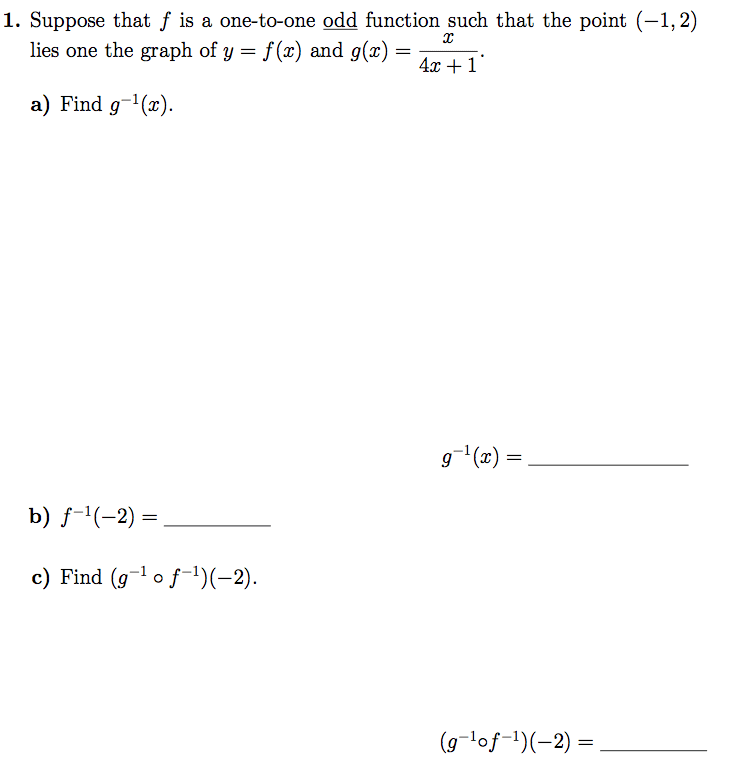MATH116 Lecture 14: M116F15_P2
Document Summary
2 (f (x) + f ( x)); (f (x) f ( x)). Now suppose that g is an arbitrary odd function. Prove that the odd part of g is g itself, while the even part of g is the constant zero function: let h(x) be the heaviside function, de ned (as in the textbook) as: (cid:26) 0. 1 h(x) = if x < 0 if x > 0 (a) write the function f (x) = x+(1 x)h(x 1)+(4x x2 4)h(x 2) in piecewise-de ned form and sketch it. (b) consider the two graphs shown. In each case, express the function shown in terms of. = 2 cos( ) (c) 2 csc(2 ) = sec( ) csc( : find the exact value of each expression. (a) tan 1(cid:0)1/ 3(cid:1) (b) sec 1 2 (c) tan(sec 1 4) (d) sin(cid:0)2 sin 1(cid:0) 3. 5 (cid:1)(cid:1: rewrite the following expressions in the form of a single general sine function (of the form.





